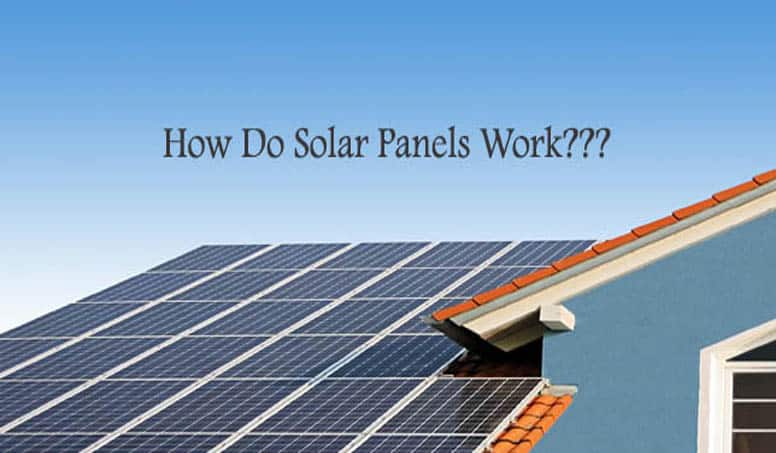Solar panels are made up of many solar units, or photovoltaic cells which in turn are made up of silicon like semiconductors. Silicon is a nonmetal with conductive properties that allow it to absorb light and convert it into electricity. The solar panels are constructed with a positive layer and a negative layer, which together create an electric field, just like in a battery. A solar panel works by allowing photons or particles of light, to knock electrons free from atoms, generating a flow of electricity. In simpler words, the photovoltaic cells convert sunlight into electricity. Photovoltaic means the generation of electricity from light. That means the solar panels work on the principle of photovoltaic effect. The photovoltaic effect is the characteristic of semiconductors like silicon which allows them to generate an electric current when exposed to sunlight.
Solar panels have an anti-reflective coating that increases sunlight absorption and allows silicon cells to receive maximum sunlight exposure. Silicon solar cells are manufactured as two cell formations. Monocrystalline and Polycrystalline. Monocrystalline cells are made up of single silicon crystal while polycrystalline cells are made up of fragments or shards of silicon. Monocrystalline formats are more efficient as they provide more room for electrons to move around.
Solar photovoltaic cells comprise a positive and negative film of silicon placed under a thin slice of glass. When the photons from the sunlight hit these cells they knock the electrons off the silicon. The electrons because of the negative charge get attracted to one side of the silicon cells which creates an electric voltage that can be collected and channeled. A Solar photovoltaic array is gathered by wiring the individual solar panels in series. Multiple strings of photovoltaic cells are terminated in an electrical box, called a fused array combiner
The working of the photovoltaic process can be summed up as follows:
- The silicon photovoltaic solar cell absorbs solar radiation or energy.
- When sun rays hit the silicon cell, electrons begin to move, creating a flow of electric current.
- The direct current is captured by the wires and fed to a solar inverter
- which is converted to alternating current electricity.
A typical solar module includes a glass casing that offers durability and protection for the silicon photovoltaic cells. Inside the casing are the insulation layer and a back sheet which protects against heat dissipation and humidity.
The solar panels produce more electricity in summer. Stronger sunlight and warmer weather work well for the solar panels. But if the temperature becomes too hot or too cold, they become less efficient. That’s why solar panels work on cloudy days too because they actually react to the visible light spectrum. That is if there is enough light to see, it means there is enough light for the solar panels to start generating electricity.
Solar panels are atmospheric friendly as they are made from silicon sheets and there is no chance of the photovoltaic cells leaking or emitting toxins. They need little maintenance and sans any noise pollution. Thus they supply a consistent, stable power generation and most importantly it gives a clean energy production.
Still, have any questions about Solar Panels? Contact us now! we will be happy to answer your questions.











